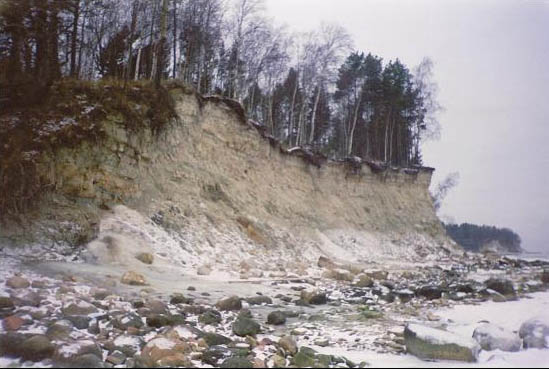| Tallinn - Estonia |
| Complete description
of case study |
PHOTO OF THE SITE
 |
|
CASE STUDY
| Title | Tallinn |
| National level | Estonia |
| Local level | Tallin county |
ABSTRACT
|
The moraine coasts in the study area are relatively stable. The resulting retreat rate of the eroded hard rock cliff over a century is estimated to be c. 0.1m annually. However, more active coastal development in Estonia has activated processes on the formerly inactive areas of the ancient coastal cliffs and bluffs. Such an increase in coastal erosion is triggered by the increasing frequency of extremely strong, disastrous storms, but this threatens only the recreational functions of the Pirita beach and the existence of a few earlier houses, which are located too close to the edge of the escarpment. The capital which can be exposed to risk from the erosion, flooding and ice pile-up concerns several newly built low-lying residential areas, seaside roads and the railway leading to the Vene-Balti oil harbour at Kopli. The main approach to prevent damage caused by erosion is to restrict construction in the coastal area and to place strict controls on forestry. |
BASIC INFORMATION
| Coastal characteristics |
|
| Policy options | Hold
the line Limited intervention |
| Socio-economic activities | Urbanisation, industry, transport and energy, tourism and recreation, nature conservation, fisheries and aquaculture. |
| Engineering techniques | Foredune and forestry maintenance, nourishment, Seawall, slope protection |
SOURCE
| Name | Dr. Ramunas Povilanskas |
| Institution | EUCC Baltic office |
| Telephone / fax | +37 (0)6312739 or +37 (0)6398834 |
| ramunas@corpi.ku.lt |